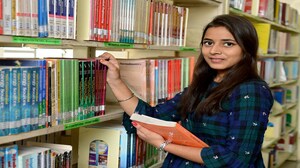Researchers at BHU develop a novel method for testing milk using evaporation at home
Synthetic milk was created in the lab by combining the right amounts of detergent, regular vegetable oil, urea, and tap water to generate a mixture that resembled actual milk in order to confirm the procedure. Then, various amounts of actual milk were combined with this artificial milk. Next, an analysis was conducted on the evaporated ring patterns of the artificial milk.

Milk is important for our health, but news reports make us wonder if it's safe. Milk adulteration with chemicals can cause serious health problems. We need to be sure we're drinking pure milk. Milk is popular, so some sellers make fake milk that looks real. This fake milk might have water, soap, and oil in it, not healthy things like real milk.
Studied by BHU
Scientists in India made a new, easy, and cheap way to test milk for added substances. This protects people's health and helps ensure milk is pure. The method involves letting a drop of milk dry and using a special computer program to analyse the pattern left behind.
A simple way to test a substance is by letting a drop dry and looking at the ring it leaves behind. Different materials leave different ring patterns, like fingerprints. Scientists used this method to check if milk was real. They made fake milk in a lab, then mixed it with real milk in different amounts. By looking at the fake milk's dried ring patterns, they could tell how much real milk was present.
Looking at the dried milk residue can tell you how good the milk is. If there are multiple rings, tiny oil droplets, or clear patches, it might mean the milk has been mixed with something else. The clearer the dried milk, the more likely it's been tampered with.
Ways to do home testing?
This technique offers a straightforward, at-home method for evaluating milk quality. Put a drop of milk on a glass slide with a medical syringe and let it evaporate. Take a picture of the vanishing patterns with the camera on your smartphone. The presence of the aforementioned indicators in the vanishing patterns on the glass slide verifies that artificial milk has been mixed with real milk.
The machine-learning model was trained and validated using the combined evaporated ring patterns of water and synthetic milk during the experiment for large-scale analysis. Throughout the trial, the model identified water-mixed milk with 95.8 percent accuracy and both pure and synthetic milk with 96.7 percent accuracy.
Read More
- #BHU
- # BHU 2024
- # Highest offer
- # MBA
- # International MBA
- # IT
Unlock yourpotential!
Let us know your preference and our team will guide you toward your academic journey. Stay tuned for personalized advice.
FAQ's
Fake milk with water, soap, or oil can be unhealthy.
They look at the ring left behind by a dried milk drop.
Yes, by letting a drop dry on a slide and checking for multiple rings, oil, or clear patches.
It can tell if milk is mixed with something else, but may not be perfect.
Scientists use a computer program to analyze the dried milk drop pattern.
Latest News

Shivam Mishra of Delhi wins the CA final and offers study advice and success tactics.

Researchers at BHU have developed a new method for testing milk at home through evaporation

Results of the OUAT 2024 Entrance Exam released; direct link

Karnataka SSLC 2024 exam timetable released; exams start from August 2

CUET 2024 results will be released shortly; click this link for CUET UG scorecards directly
Photos and Videos
















COMMENTS (0)